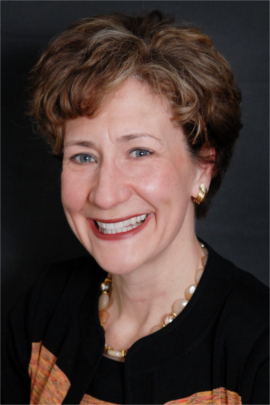
IAAP officially launched at the 2014 CSUN conference. What has the organisation been up to in the year since?
Chris Peck: IAAP has had a lot of activity and an exciting first year as an organisation. We have continued activities with our key areas of focus being individual professional development, organisational development and community development. Some of the highlights of this past year across these areas of focus, include hosting a robust monthly educational webinar program, the launch of our Introduction to Accessibility Curriculum, the launch of the beta of our online community, IAAP Connections, and continued work on the roadmap for IAAP Accessibility Certification. We have also recently announced the first annual IAAP Accessibility Conference coming up later in October 2015. I am also pleased to have joined this dynamic organisation as of November of 2014 to continue the momentum with all these activities and more.
Regarding our membership progression, we started with zero at CSUN in 2014 and are pleased to now have more than 1,700 members that represent accessibility professionals from more than 50 countries across the globe. We also have 43 organisational members including 31 Founding Member organisations.
What was the original manifesto or reasons for IAAP’s creation? Has it changed?
Since our inception, our focus remains unchanged—IAAP is dedicated to defining, promoting and improving the accessibility profession globally through networking, education and certification in order to enable the creation of accessible products, content and services. Some of the activities and benefits we may provide to members will change or evolve, but our mission remains the same.
Professional development is a major focus for IAAP. Can you discuss the drivers for certification and where IAAP is at in developing its plans for an accessibility certification?
As we spoke to governments, companies, and advocacy groups, we heard them expressing a common concern. They were hiring people they believed were accessibility experts, but didn’t know if they were actually experts, or if they could provide the guidance needed. People were getting frustrated with paying hundreds of thousands of dollars and still not getting it right.
Developing and preparing to launch the IAAP Accessibility Certification is a major focus of ours right now, but unfortunately it cannot happen overnight. We have a dedicated IAAP Certification Committee that has developed a framework for the certification program. We are in the process of developing the certification program and plan for it to be completed and ready to launch in early 2016.
Could you tell us about being appointed as IAAP’s CEO? What’s your background and your vision for the IAAP?
I joined the IAAP as the new CEO in November 2014 and come to IAAP with 29 years of non-profit and association management with a particular focus in strategic planning, education product portfolio management and certification administration to help IAAP develop these key areas.
My vision is to support the organisation to achieve their mission of defining, promoting and improving the accessibility profession. And this takes many forms, including the creation of educational programming, products and services, providing a meeting “place” virtually or in person where accessibility professionals can gather and share their knowledge, concerns, and needs. And ultimately, through the work of IAAP enhance the lives of people with disabilities.
Aside from professional development, what other areas will IAAP be focussing on and developing in 2015?
In addition to continuing our robust monthly webinar program in 2015 and developing the certification program, we have also recently announced the plans for our first IAAP Accessibility Conference. We will be hosting our first in-person education conference in October, 2015 in Las Vegas, Nevada. We are also working to identify and connect with partner organisations in the accessibility industry in order to expand our outreach efforts and work together to develop programs and services that are not only mutually beneficial but benefit the accessibility profession as a whole.
What is the state of accessibility? What needs to happen to improve access in the year ahead?
The recognition of the need for accessibility and the increase the number of companies moving in this direction is increasing over time. We hear from our members that they need to continue to make the case for accessibility in their companies and we are here to help them do that as well as help them develop in their profession so as a result we can help those with disabilities access more and more information, products and services on a daily basis.
Is the case for accessibility evolving? Is it being heard by the right people?
There has been much progress and yet much still needs to be done. There’s a definite upward trend in hiring accessibility specialists. Several respected companies have recently established Chief Accessibility Officer positions, making a long term and comprehensive commitment to accessibility, and have been serious in recruiting people with accessibility expertise to build or grow their programs.
There have been hundreds of positions open for accessibility specialists within the last year, within large companies and nonprofits. Some of this is being driven by new regulations, such as the Convention on the Rights of People with Disabilities. About 150 countries have signed on, and they are drafting new regulations which affect industry.
Many organisations are recognising that accessibility is good business because it opens its products and services to an important and large market which includes persons with disabilities and age-related impairments. And more examples have been highlighted of technology or enhancements built for person with disabilities which have resulted in improvements for all people. While the reasons that many organisations have used as a driver for accessibility programs—demonstration of corporate social responsibility or reduced legal risk—still are important factors, more and more they are being recognised as components of a strong overall business case for accessibility.
You can find out more about the IAAP on its website. You can find out more about IAAP's presentation at the 2015 CSUN conference online.
Top of page

